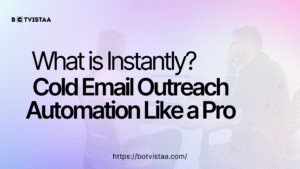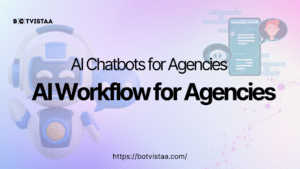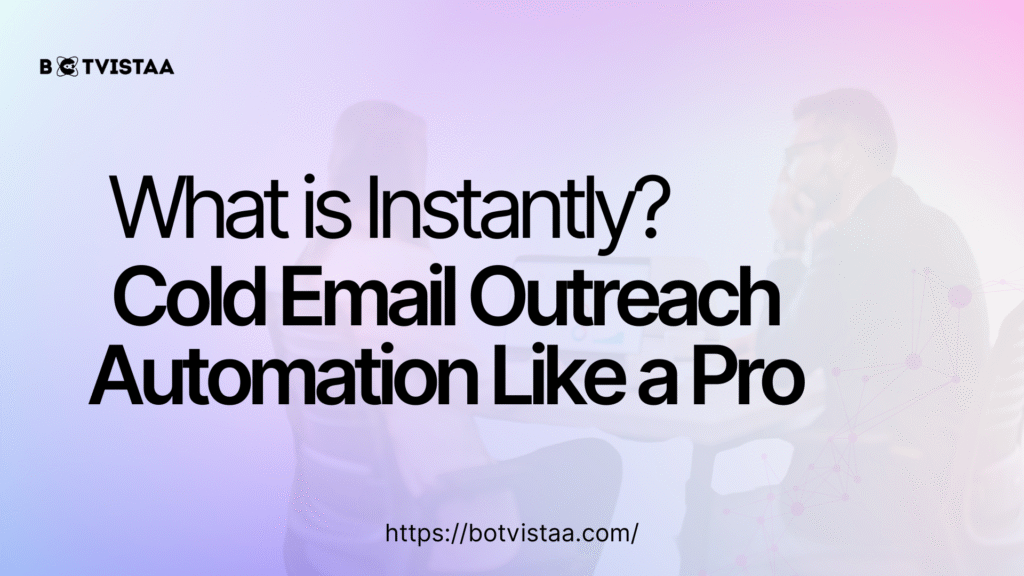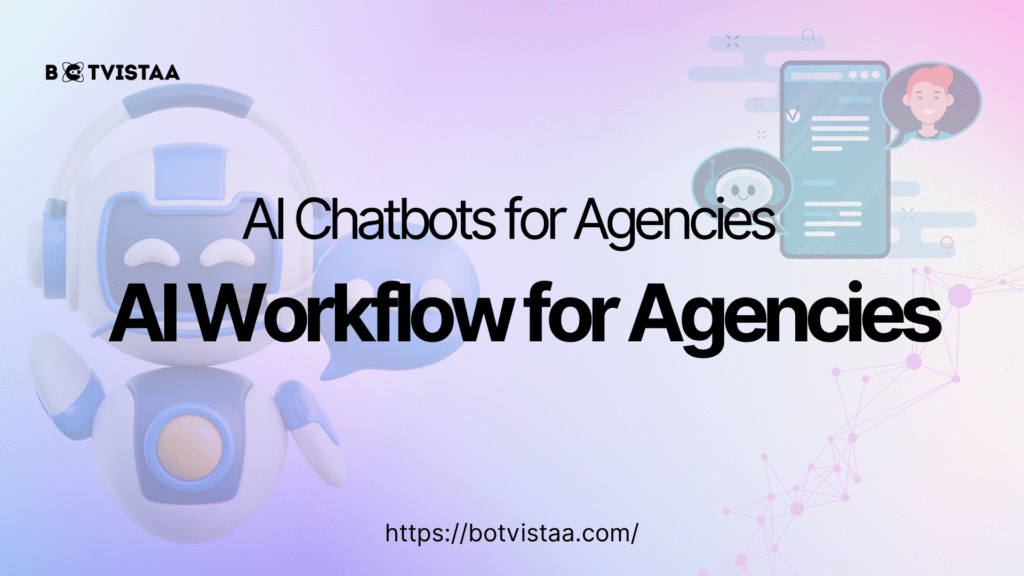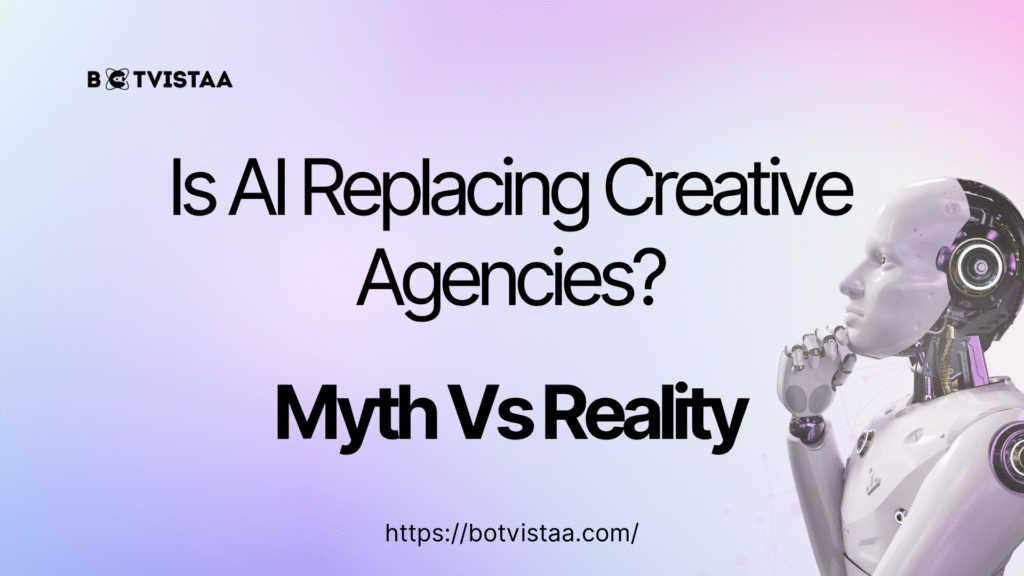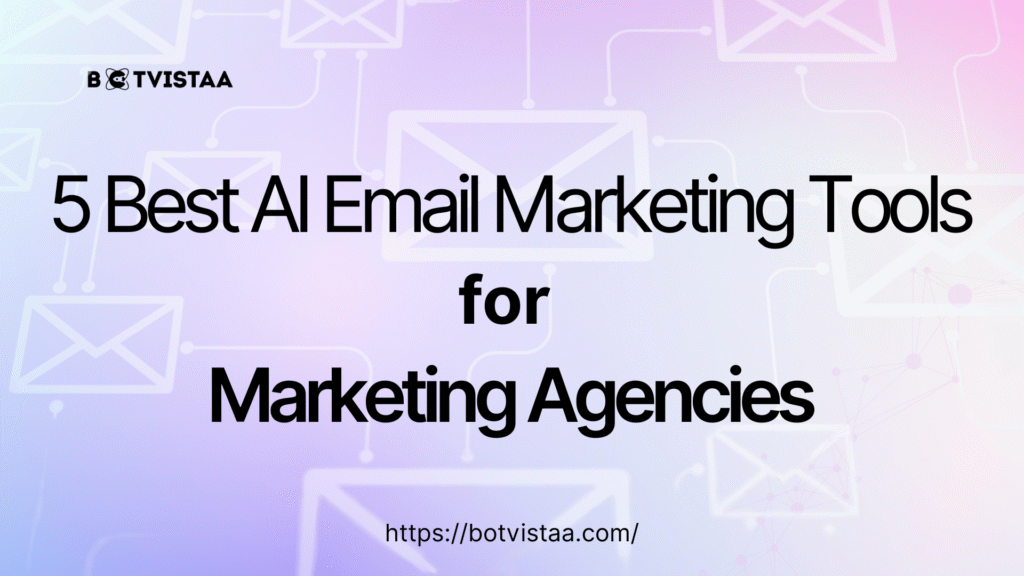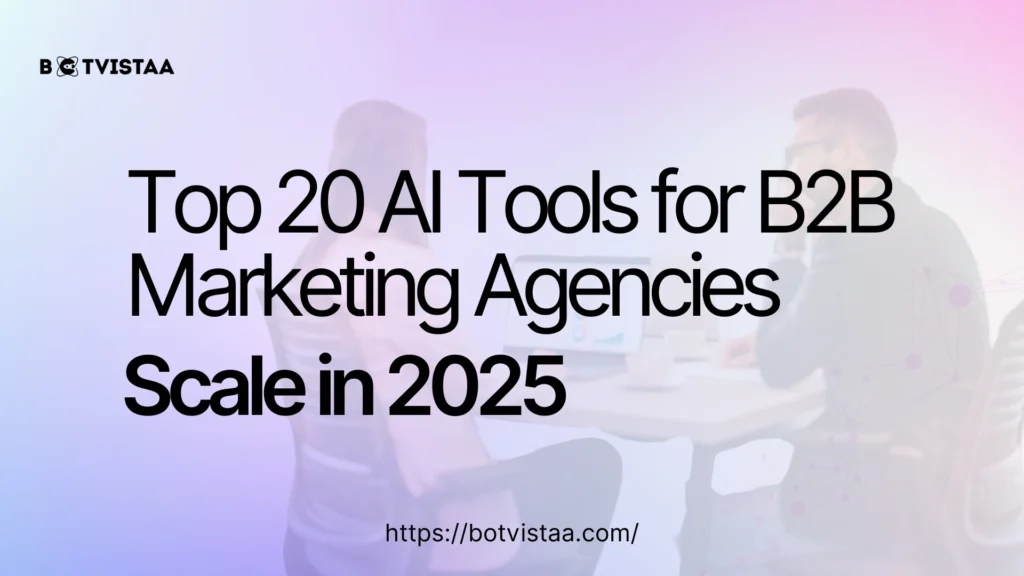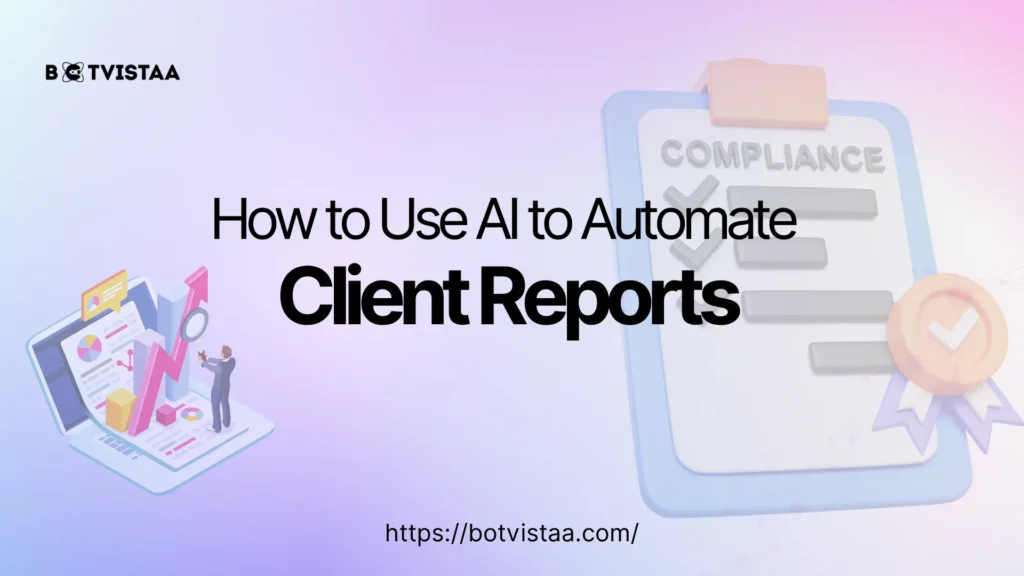Lorem ipsum dolor sit amet, consectetur adipiscing elit. Ut elit tellus, luctus nec ullamcorper mattis, pulvinar dapibus leo.
- Best AI Tools For Automation
AI Tools vs Traditional Tools for Agencies: Which Delivers More in 2025?
Jump To
AI Tools vs Traditional Tools for Agencies: Which Delivers More in 2025?
When you purchase through links on our site, we may earn an affiliate commission. Here’s how it works.
In 2025, agencies have to think seriously about whether to use AI tools or traditional tools. Agents managed tasks, ran ad campaigns, and kept track of results by working directly with spreadsheets and making phone calls.
With more tasks and less time, agencies search for better solutions. They need tools that solve problems and grow results. Clients want faster results, real-time insights, and personalized campaigns powered by generative AI.
AI is helping teams to work faster, smarter, and more efficiently. Yet, many agencies still depend on old-school methods they’ve trusted for years.
It’s important to know the differences between tools for agencies to make smart choices. This choice affects how an agency grows.
We’ll take a closer look and see that choosing between AI and traditional tools isn’t always easy it depends on a lot of different factors.
What Do We Mean by "AI Tools" and "Traditional Tools" in Agency Work?
AI tools use smart software that learns, writes, designs, and automates tasks. These tools help teams work faster with data.
Traditional tools include software, email, spreadsheets, and manual processes. These tools need human effort and take much more time.
AI tools support marketing, design, reporting, and more. Traditional tools rely on people to complete every single step manually.
What Role Are AI Tools Playing in Modern Agencies?
AI helps agencies become more productive in their work. AI performs tasks that would normally require a significant amount of time, including writing content, organizing posts for social media, and handling ad audiences.
AI allows teams to complete these jobs more efficiently and accurately than they could on their own. One example is that AI can automate blog posts, build ads, analyze SEO results, and send customized emails, saving you a significant amount of time.
They simplify data so agencies can make better decisions. You can complete projects quicker, get better results, and leave your clients satisfied. Basically, AI improves productivity, saves money and enables agency teams to pay closer attention to important matters.

What Limitations Do Traditional Methods Come With in Today’s Landscape?
Traditional methods take more time, cost more money, and often delay results when clients expect speed and data-driven insights.
Manual work increases the chance of errors, miscommunication, and missed deadlines, causing stress and inconsistent client satisfaction.
Traditional tools struggle with big data, real-time insights, automation, and scaling services for growing or global brands.
Why Are Agencies Even Considering the Switch to AI?
Agencies want to save time and reduce costs. AI tools handle boring tasks so people can focus on big ideas. AI improves output speed and accuracy through advanced algorithms. It helps small teams act like big teams.
Agencies find their work pressure decreasing every day. Nowadays, clients prefer solutions that are fast and smart. AI helps agencies meet deadlines faster and deliver results that feel fresh and useful.
PRO TIP
Want to future-proof your agency? Start blending AI into your daily workflow. Let AI handle the heavy lifting—like generating content, analyzing data, and automating reports—so your team can focus on strategy, creativity, and client experience.
How Do AI Tools and Traditional Tools Compare in Core Agency Functions?

Which Is Faster—Human Hands or How Machine Minds?
AI tools work 24/7, deliver results quickly, and help teams work faster without waiting on meetings or long processes.
Traditional tools often involve back-and-forth communication, manual updates, and slower decision-making due to human involvement at every step.
In terms of speed and efficiency, AI clearly leads by cutting down time, automating tasks, and boosting productivity.
Where Does the Money Go—AI Subscriptions or Salaried Teams?
AI tools reduce the need for large teams, saving money on salaries, training, and multiple tools that do separate jobs.
Traditional tools often require hiring experts, paying for several platforms, and spending more on managing operations and revisions.
In the long run, AI becomes cost-effective, especially for agencies looking to scale without increasing overhead.
Are AI Tools More Accurate Than Human-Driven Processes?
AI tools analyze huge data sets with fewer errors, offering more accurate insights and consistent outputs every time. Human errors can affect reports, tracking, and decisions, especially under pressure or tight deadlines.
AI reduces guesswork, uses logic, and ensures data-driven decisions that improve marketing results and performance tracking.
PRO TIP
Want to scale your agency smartly? Invest in AI tools for data analysis, automation, and campaign management. They not only save time and money but also ensure your strategies are backed by accurate, real-time insights—giving you a serious edge over competitors still stuck in manual mode.
What’s the Real-World Impact on Agency Operations?
Can AI Tools Really Support Creative Strategy—or Just Execution?
AI generates ideas and drafts fast. But it can’t feel emotion or understand deep meaning like human creatives do.
Agencies use AI for the first step, then add a personal touch. This saves time while keeping campaigns powerful and human.
Creative work needs both speed and soul. AI provides speed. People provide soul. Together, they deliver better and smarter ideas through the adaptability of generative AI.
Do AI Tools Reshape Client Expectations?
Clients now expect fast replies, smart ideas, and clear reports. AI helps agencies meet these growing expectations without adding pressure.
AI improves delivery time and project quality. Clients notice the change. They start asking for faster, cheaper, and smarter work from AI systems.
Agencies using AI gain a strong advantage. Clients prefer speed with quality. AI makes that possible and keeps them coming back.
What Are the Downsides of Going All-In on AI?
AI tools sometimes give wrong or biased answers. They don’t understand emotions, humor, or cultural details like humans can.
If you trust AI too much, you risk hurting your message or missing key audience needs. Balance is always important.
AI needs human checking to ensure the effectiveness of autonomous systems. You must edit content, review reports, and adjust tone to keep quality high and avoid mistakes.
What Happens If Agencies Stick with Traditional Tools?
Agencies using only traditional tools fall behind. They miss deadlines, overwork teams, and lose clients to faster, smarter competitors.
Manual tasks waste time and energy that could be saved with AI tools. Teams feel tired and stressed. Projects take longer and results often disappoint clients.
Change is not easy, but needed. Agencies must evolve to stay relevant. Traditional-only methods won’t survive the AI-powered future.
Should Agencies Combine AI Tools with Traditional Expertise?
Smart agencies mix AI speed with human skills. AI handles drafts, data, and design. Humans add ideas, feelings, and strategy alongside artificial intelligence.
This combo brings strong results. Projects finish fast and look great. Clients get the best of both tech and talent.
AI doesn’t replace people. It supports them. Together, they create more value, save time, and build better client relationships every day.
Final Verdict for Agencies
Going all-in on AI may save time but lose human creativity—balance is key for agencies to deliver great results.
Use AI for speed and data, but keep human-led thinking for brand tone, strategy, and personalized experiences.
Smart agencies mix both worlds—getting the best of automation without losing their creative edge and human touch.
What’s the Best Strategy for Staying Competitive in 2025?
Keep testing new AI tools, train your team, and blend them with trusted processes to stay ahead of the market.
Focus on results, not just trends—use AI where it helps, and trust humans where empathy matters most.
In 2025, agencies that adapt, balance tech with creativity, and stay client-focused will lead and grow faster than others.
FAQS : AI tools vs traditional tools for agencies
What are the primary benefits of using AI tools in agencies?
AI tools make work more efficient and accurate. They automate tasks, freeing up time for creative and strategic work.
Subscribe To Our Newsletter
How do AI tools compare to traditional tools in terms of data analysis capabilities?
AI tools excel at analyzing big data and giving insights. They use machine learning and natural language processing. Traditional tools struggle with complex data, while AI systems excel in these use cases.
What are the key considerations when implementing AI tools in an agency setting?
Agencies should think about integration, training, scalability, and future-proofing. This ensures a smooth transition and maximizes benefits.
Can AI tools help agencies improve their content creation processes?
Yes, AI tools can generate ideas and optimize content. They can even create data-driven reports and social media posts.
How do traditional tools handle client relationship management compared to AI-powered CRM systems?
Traditional tools rely on manual entry and lack advanced analytics. AI-powered CRM systems offer a deeper understanding of client relationships.
What are the potential cost savings of adopting AI tools for agencies?
AI tools can save costs by automating tasks and improving efficiency. This reduces the need for manual labor, leading to savings over time.
Are AI tools more scalable than traditional tools for growing agencies?
Yes, AI tools are more adaptable to growing agencies. They handle more data and complexity, unlike traditional tools that may need upgrades to match the capabilities of AI systems.
How can agencies measure the ROI of implementing AI tools?
Agencies can track efficiency, accuracy, and client satisfaction. Regular cost-benefit analyses also help measure ROI.

